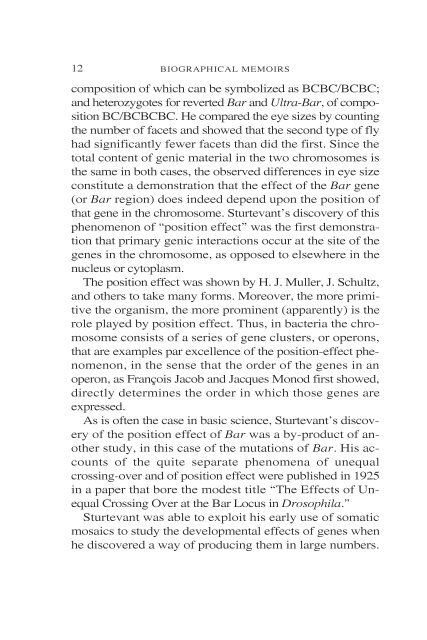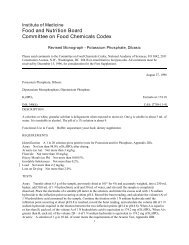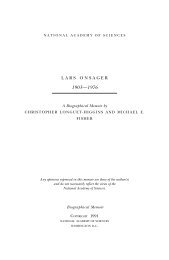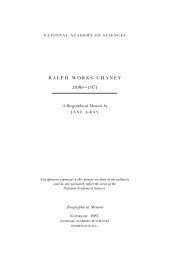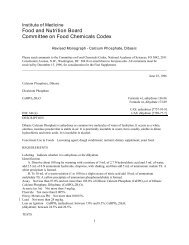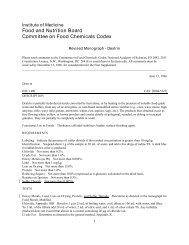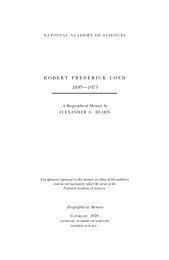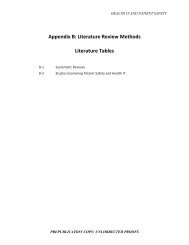ALFRED HENRY STURTEVANT - National Academy of Sciences
ALFRED HENRY STURTEVANT - National Academy of Sciences
ALFRED HENRY STURTEVANT - National Academy of Sciences
Create successful ePaper yourself
Turn your PDF publications into a flip-book with our unique Google optimized e-Paper software.
12 BIOGRAPHICAL MEMOIRS<br />
composition <strong>of</strong> which can be symbolized as BCBC/BCBC;<br />
and heterozygotes for reverted Bar and Ultra-Bar, <strong>of</strong> composition<br />
BC/BCBCBC. He compared the eye sizes by counting<br />
the number <strong>of</strong> facets and showed that the second type <strong>of</strong> fly<br />
had significantly fewer facets than did the first. Since the<br />
total content <strong>of</strong> genic material in the two chromosomes is<br />
the same in both cases, the observed differences in eye size<br />
constitute a demonstration that the effect <strong>of</strong> the Bar gene<br />
(or Bar region) does indeed depend upon the position <strong>of</strong><br />
that gene in the chromosome. Sturtevant’s discovery <strong>of</strong> this<br />
phenomenon <strong>of</strong> “position effect” was the first demonstration<br />
that primary genic interactions occur at the site <strong>of</strong> the<br />
genes in the chromosome, as opposed to elsewhere in the<br />
nucleus or cytoplasm.<br />
The position effect was shown by H. J. Muller, J. Schultz,<br />
and others to take many forms. Moreover, the more primitive<br />
the organism, the more prominent (apparently) is the<br />
role played by position effect. Thus, in bacteria the chromosome<br />
consists <strong>of</strong> a series <strong>of</strong> gene clusters, or operons,<br />
that are examples par excellence <strong>of</strong> the position-effect phenomenon,<br />
in the sense that the order <strong>of</strong> the genes in an<br />
operon, as François Jacob and Jacques Monod first showed,<br />
directly determines the order in which those genes are<br />
expressed.<br />
As is <strong>of</strong>ten the case in basic science, Sturtevant’s discovery<br />
<strong>of</strong> the position effect <strong>of</strong> Bar was a by-product <strong>of</strong> another<br />
study, in this case <strong>of</strong> the mutations <strong>of</strong> Bar. His accounts<br />
<strong>of</strong> the quite separate phenomena <strong>of</strong> unequal<br />
crossing-over and <strong>of</strong> position effect were published in 1925<br />
in a paper that bore the modest title “The Effects <strong>of</strong> Unequal<br />
Crossing Over at the Bar Locus in Drosophila.”<br />
Sturtevant was able to exploit his early use <strong>of</strong> somatic<br />
mosaics to study the developmental effects <strong>of</strong> genes when<br />
he discovered a way <strong>of</strong> producing them in large numbers.


